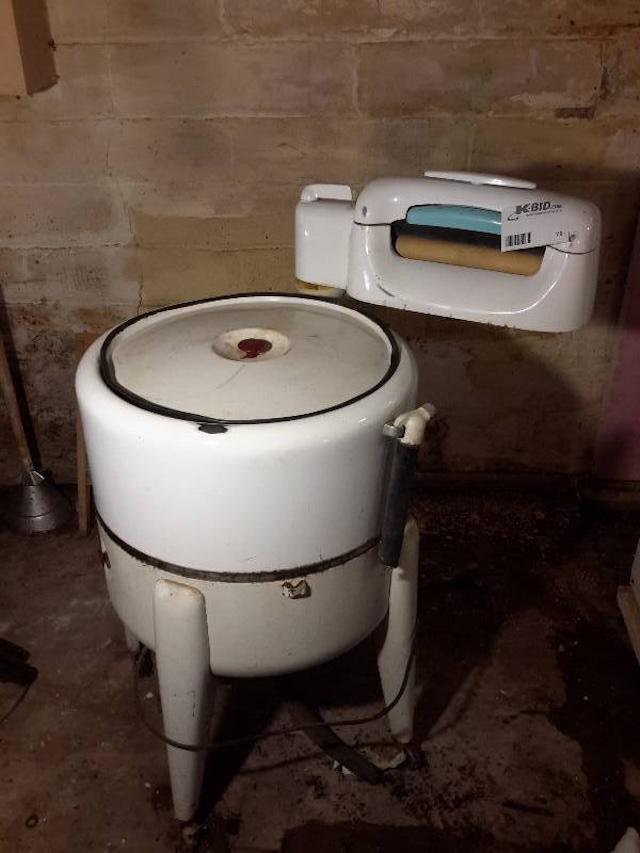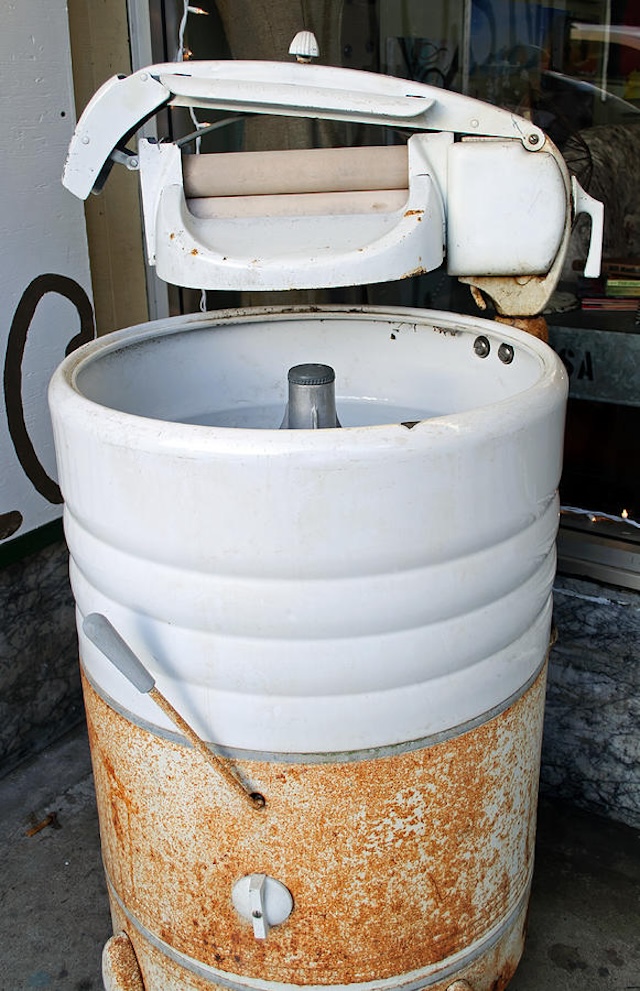In the corner of an old shed or a dusty basement, you might stumble upon a peculiar machine that, at first glance, seems like a relic from a bygone era. For those who lived through past decades, this machine is more than just an antique – it is a symbol of technological progress in household life. The wringer washing machine, which featured either a hand-crank or electric wringer mechanism, was once a lifesaver for homemakers, easing the burden of arduous laundry tasks. Let’s take a journey through its history and explore how this remarkable appliance revolutionized domestic life.

The wringer washing machine, a household appliance from the mid-20th century, once revolutionized how laundry was done. Before its invention, doing laundry was a tedious and time-consuming task, often requiring significant physical labor. The wringer washing machine changed all that, making laundry easier, faster, and less strenuous. But what is its history? How did it evolve? And why did it fade into obscurity? Let’s explore these questions and more as we dive into the fascinating world of this classic appliance.
The Birth of the Wringer Washing Machine
The wringer washing machine was introduced in the early 20th century as a solution to the labor-intensive process of hand-washing clothes. Prior to its invention, people had to scrub clothes on washboards, boil them in large pots, and then wring them out by hand – all of which were physically demanding and time-consuming tasks. With the advent of the wringer washer, household laundry became much more manageable.
The first wringer washers were manually operated, with users turning a hand-crank to power the agitation and wringing process. These early machines helped reduce the physical effort required for washing clothes, though they still required significant user input. Later, as electricity became more common, electric versions of the wringer washer were introduced, further simplifying the laundry process.

How It Worked
The basic design of the wringer washing machine consisted of a large tub where clothes were soaked and agitated in soapy water. The agitation was powered either by a hand crank or, in the case of electric models, an electric motor. After the washing cycle, clothes were fed through two rollers, or a wringer, which squeezed out excess water. This wringing process not only made clothes easier to handle but also significantly reduced drying time.
The wringer washing machine was considered an efficient way to wash clothes because it minimized the need for manual labor while still achieving the desired results. The machine allowed users to wash large loads of laundry at once, something that would have been difficult or impossible to achieve with traditional hand-washing methods.
The Evolution of the Wringer Washer
The early manual models of the wringer washer required a fair amount of effort to operate, but as the 20th century progressed, electric-powered versions became more popular. With the rise of electricity in homes, these electric machines offered greater convenience, requiring less manual input from the user. The introduction of electric wringer washers made laundry day significantly easier and more efficient for homemakers.
As electric wringer washers became more widespread, manufacturers introduced new features to improve the machines‘ efficiency and usability. By the 1940s, models became available with more durable construction and larger tubs, allowing for more laundry to be washed in one cycle. The addition of better safety features also made the wringer washer a safer appliance to use in the home.
The Golden Age of the Wringer Washer
The wringer washing machine reached its peak popularity during the 1940s and 1950s, an era often referred to as the golden age of the wringer washer. During this period, wringer washers were a common sight in households across the United States and other parts of the world. Major appliance manufacturers like Maytag, Whirlpool, and Kenmore produced a variety of models, each with improvements in design and functionality.
These washers were known for their durability and efficiency. They were able to handle large loads of laundry, making them particularly popular in homes with big families. The wringer washer was also praised for its relatively low water and energy consumption compared to the automatic washers that would come later.

Nostalgic Memories
For many who grew up during the mid-20th century, the wringer washing machine evokes fond memories of childhood. The rhythmic churn of the agitator, the satisfying clunk of clothes passing through the wringer, and the smell of freshly washed laundry are nostalgic reminders of a simpler time. Children often enjoyed watching the machine in action, and some even helped their parents with the laundry, making the process a family affair.
As kids watched clothes being fed through the wringer, it was not uncommon for them to find the mechanics of the machine fascinating. Some might even recall helping by turning the hand crank or by retrieving clothes from the wringer. For many, the wringer washer was more than just a machine – it was a memorable part of their upbringing.
Challenges and Risks
Despite its popularity, the wringer washing machine did have its drawbacks. One of the most significant risks was the potential for injury. The rollers that squeezed out excess water were powerful and could easily catch clothing, hair, or even fingers. To address this, manufacturers added safety features, such as automatic shut-off mechanisms and release levers, to reduce the risk of accidents.
Additionally, while the wringer washer saved time and effort compared to hand-washing clothes, it still required manual labor to feed clothes through the rollers and manage the washing process. This was particularly difficult for individuals with physical limitations or small children who might have struggled to operate the machine.
The Decline of the Wringer Washer
The 1960s and 1970s saw the rise of fully automatic washing machines, which marked the beginning of the decline for the wringer washer. These new machines offered greater convenience, with automated cycles for washing, rinsing, and spinning clothes dry. As automatic washers became more common, the need for manual wringer washers diminished, and they were gradually replaced by more modern appliances.
The convenience of fully automatic machines, combined with innovations in energy efficiency, ultimately led to the decline of the wringer washing machine. While these new machines provided a higher level of automation, the wringer washer still holds a special place in the hearts of those who remember using it.

The Legacy of the Wringer Washer
Today, the wringer washing machine is a nostalgic artifact, reminding us of a time when household chores required more hands-on effort. Despite being largely obsolete, the wringer washer symbolizes the ingenuity of past generations who sought to make daily life easier. It also serves as a reminder of how far we’ve come in terms of technology and household appliances.
For vintage enthusiasts, the wringer washer is not just a piece of old technology; it is a historical relic. The design and ingenuity of the wringer washer continue to inspire admiration and curiosity, as it represents a crucial step in the evolution of household appliances.
Conclusion
The wringer washing machine may no longer be a fixture in modern homes, but its impact on domestic life cannot be overstated. It revolutionized the way laundry was done, making a once arduous task more manageable. For those who grew up with it, the wringer washer remains a cherished memory of simpler times. For younger generations, it offers a fascinating glimpse into the history of household technology and the ingenuity that made life a little bit easier.



